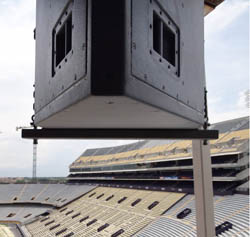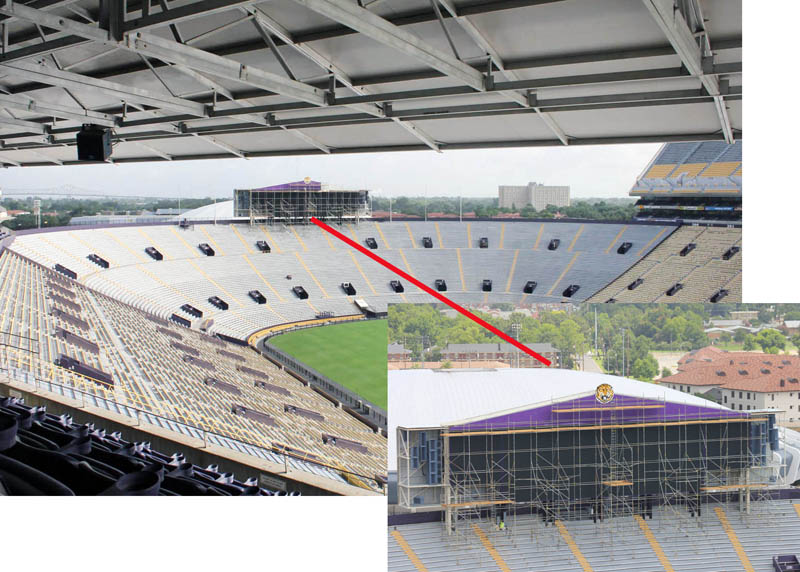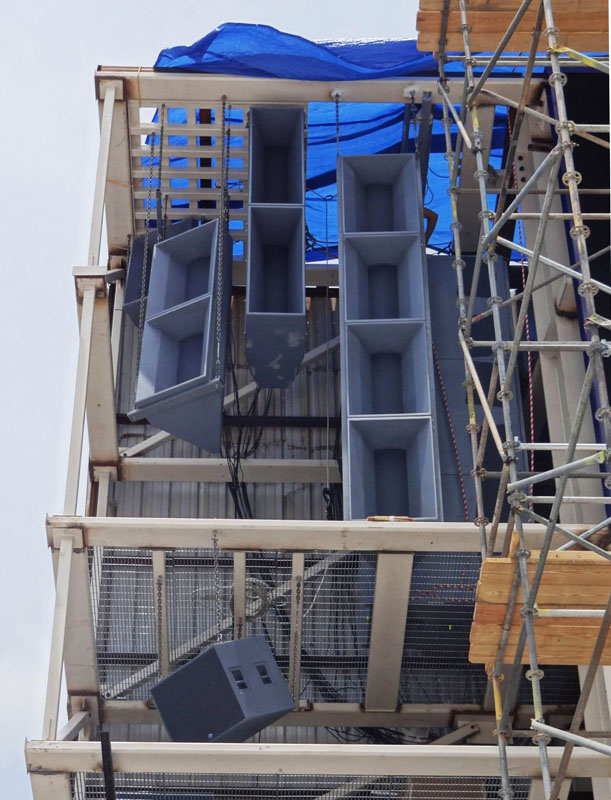
Nicknamed “Death Valley,” Tiger Stadium on the campus of Louisiana State University (LSU) in Baton Rouge is renowned for the deafening roar produced by 92,500-plus fans on Saturdays in support of the school’s powerhouse football team.
The noise is notorious for scrambling the communications and sapping the confidence of Tigers opponents, and indeed, the NCAA ranked Tiger Stadium as the loudest stadium in college football, noting as an example that fans’ euphoric response to a last-minute LSU touchdown in 1988 measured as a minor earthquake on the campus seismograph.
Until recently, the venue was saddled with an underpowered sound reinforcement system that one commenter likened unfavorably to a car radio. The situation has been remedied with a new sound reinforcement system designed specifically for the venue by Anthony James Partners of Richmond, VA, and installed by Baker Audio of Norcross, GA.
“The old system was expressly designed for public address, not music playback,” explains Larry Lucas, director of audio engineering for Anthony James Partners. “Given the game-day experience demanded from fans these days, a serious upgrade was a necessity. The point-source system that we designed flanks the LED screen on the north end of the stadium and throws 800 feet across to the south end zone seating.”
Fourteen Danley Sound Labs J3-64 full-range Jericho Horns comprise the bulk of the new system, while four Danley J4-31 high-frequency Jericho Horns contribute to the high-end throw. Six Danley TH-812 “Rock Monster” subwoofers fill out the bottom. Four Danley SH-96s, four SH-64s, four SM-80s, and twenty SH-MINIs provide fill for areas not directly covered by the main system.
A 32-channel Yamaha LS9 provides a familiar front end, while the QSC Q-Sys platform provides digital processing, feeding 24 Lab.gruppen PLM 10000Q and 20000Q amplifiers.
The north end scoreboard resides more than 80 feet above ground level, and each loudspeaker and subwoofer had to be lifted individually by crane to that height. Then the Baker Audio rigging crew set up a beam trolley system with rigging motors to lift each set into position, secure final rigging hardware, and lock in the angles and aiming points.
Because Tiger Stadium is in a hurricane zone, everything had to be “over-engineered” to make sure that the rigging tolerances would hold up to hurricane force winds.
“There are always questions about how a system’s real-life performance will compare to the acoustical models we work with in the design process,” notes Chris Moore, senior project manager with Baker Audio. “Given the throw distances at Tiger Stadium, a few degrees in coverage pattern or small variables in the overall acoustic performance could have been very time consuming to correct in the field. No one wants to do a redesign in the field, especially given the rigging elements that we had to use on this job.
“Thankfully, the Danley speakers performed exactly as the design models predicted they would, so we did not have to change any rigging angles or aiming points once we had the speakers hanging in the air. That made the installation process fast and efficient. It’s always a good day when everything performs as planned.”
“With the Jericho Horns, we were able to throw 8 kHz that full distance with program material that measured 105 dBA,” Lucas adds. “That’s an unprecedented technical leap.”


